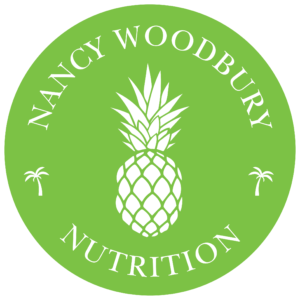
Image courtesy of amenic181 at freedigitalphotos.net
In honor of Valentine’s Day last weekend, I wrote about food synergy and provided examples of foods that pair well together to increase the absorption of key nutrients. So this week, it seems logical to highlight foods that are not so compatible together and inhibit nutrient absorption. This can happen when the phytochemicals and minerals contained in foods bind to each other to form a complex molecule that we cannot digest and absorb.
Many factors influence nutrient absorption: the food source, chronic health conditions such as celiac disease that affect the intestinal cells where many nutrients are absorbed, and your body’s current need for a particular nutrient. For example, you will absorb more iron from the food you eat if you are iron-deficient than if your iron status is normal. When planning meals for optimal nutrition, you should know which foods inhibit nutrient absorption to avoid seating these food frenemies at the same table:
Caffeine
Problem: Caffeine in coffee and tea decreases absorption of iron, calcium and magnesium, and its diuretic effect can increase urinary excretion of calcium. Polyphenol antioxidants such as epigallocatechin-3-gallate (EGCG) found in green tea, bind to iron to decrease its absorption.
Solution: Take your coffee break in between meals to reduce the loss of valuable minerals when coffee is consumed with a meal.
Alcohol
Problem: Alcohol consumption decreases the absorption of thiamin (vitamin B1), vitamin B12, zinc and folic acid.
Solution: Reduce alcohol intake and be sure to meet your nutrient needs by eating a healthy diet with an adequate caloric intake. Alcoholics often skip meals and neglect their nutrition needs.
Calcium
Problem: Calcium decreases absorption of non-heme iron found in plant foods by 50%.
Solution: Be sure to consume foods with calcium and iron separately if you are iron deficient. Good sources of calcium include milk, yogurt, cheese, calcium-set tofu, fortified foods, spinach, almonds, white beans, bok choy, kale, broccoli, pinto beans and red beans. Iron-rich foods include beef, fortified cereal, beans, oysters, molasses, lentils, firm tofu, kidney beans, cashews, spinach, shrimp, light tuna, eggs, tomatoes, dark- meat poultry, raisins and prunes.
Phytic acid
Problem: Phytates, which store phosphorus in plant foods such as beans, legumes, whole grain cereals, nuts, seeds and soy products, bind to the minerals calcium, iron and zinc, and decrease their absorption.
Solution: Soak beans and nuts overnight and then cook them in fresh water; fermenting, sprouting, and leavening whole grains improves digestibility. Consuming these foods with vitamin C can help, as well.
Oxalic acid
Problem: Oxalates are phytochemicals found in foods such as spinach, beets, figs, chocolate and beer. They decrease the absorption of the calcium and magnesium within these foods but not in other foods eaten at the same meal. The oxalates in these foods bind to calcium and form a complex that the intestines cannot absorb.
Solution: Eat kale or collard greens, instead of spinach, to obtain calcium from leafy greens with fewer oxalates.
